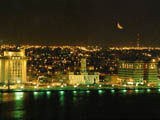Where to Live in Mexico
How to Choose a Place

Buy or Rent?
When you first arrive in Mexico, renting makes perfect sense. You can get a feel for the culture, town, and neighborhood without making a long-term obligation. You can chat-it-up with longtime retirees and get the inside scoop without tying up a lot of money in real estate. If you have just sold your home in the States and are feeling flush for the first time in years, you can invest in stocks or bonds and rent a place on the interest. It is easy to find reasonable rents, and Mexican laws favor the renter, giving you protection against weird and unscrupulous landlords. If you want to try another part of the country, you can just pick yourself up like a turtle and move on. There are a few downsides to renting, of course. You may have to deal with steady increases in rent or wait forever to have a leak fixed.
If you feel more comfortable owning a home or enjoy investing in real estate, this may be the perfect time to buy. Real estate is appreciating rapidly in many parts of Mexico, including coastal areas around Puerto Vallarta, Zihuatanejo, and Manzanillo, Quintana Roo, parts of Baja California and inland towns like San Miguel de Allende and Chapala. There are still many deals to be had. If you dream of owning a home near a palm-shaded beach, an elegant colonial, you may be able to afford it, even if you don't have the cash. Several U.S. mortgage companies have started lending money on Mexican real estate. Ownership laws make it as easy and safe to buy a home in Mexico as in the States.
Where do you want to buy?
You won't find yourself limited, either by price or availability, to the backwoods or less-desirable areas. Perhaps Acapulco? Mazatlan? Mexico City? Cozumel or Cancun? You name the spot and you will find choice parcels available for much less than you would expect. While the legendary "cheap land" in Mexico is fast disappearing, compare value for value and you will still get a lot more bang for your buck in the Mexican market than just about anywhere else. It's never a bad time to buy in Mexico!
This is especially important if you're looking for a great place to retire. Why not invest some of your fastidiously saved retirement funds in real estate that will not only give you a great place to live and enjoy your golden years, but will be a great investment that your children and grandchildren will enjoy for a long time to come? Mexico is a stable country with an expanding infrastructure and a health-care system ready to attend to whatever your needs might be. Younger, older or anywhere in between, the opportunities in Mexican real estate are limitless. Whether your target is to live, retire or as a vacation getaway that would be available for occupancy 365 days a year, there has never been a better time to find your ideal spot!
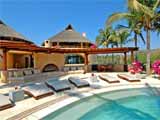
The Provinces
Research and assess places to live in Mexico. The detailed guide gives you an overview of each location, and explain matters related to living and retiring in each one...
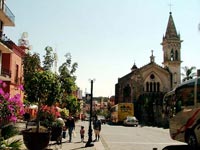
Cuernavaca, Morelos
Located fifty-six miles southeast of Mexico City, Cuernavaca is a colonial city that dates back to at least 1200 AD, when the settlement was an important agricultural and artisan center. Following its conquest by the Aztecs and later by the Spanish, the city continued to be an ongoing agricultural concern and also became a popular get-away location for wealthy Spaniards living in the capital.
Popular with Visitors and Expatriates
Mexicans and foreigners alike are attracted to Cuernavaca. They are drawn here by three key attributes that make the location ideal for living and retirement: its proximity to Mexico City, its year-round temperate climate, and its abundance of modern services and amenities.
Cuernavaca's altitude, at just over 5,000 feet above sea level, bequeaths the city a mild, year-round, temperate climate with a very comfortable annual average of temperature of 70F/21C. Air-conditioning is not required here and, as electricity is the most expensive utility in Mexico, this can translate into significant annual energy savings.
Colonial Center
Much of the city center's colonial charm has been compromised of late lack of necessary maintenance, heavy street traffic, and urban eyesores like graffiti. None of this is is un-fixable, nor is it a reason to avoid Cuernavaca: the matter of repair and restoration will probably be addressed in due course, as Mexico City's decaying historical center was restored when it had fallen into significant disrepair.
Lifestyle Service and Amenities
As more people have arrived to live here, services like clinics and hospitals, supermarkets, shopping malls and leisure facilities have opened their doors to fulfill the increasing demand. Cuernavaca also features several city-based and regional attractions which provide visitors and residents with plenty of options for entertainment and leisure activities.
The city is host to a number of annual events and festivals each year, and there is often something happening at one of the downtown plazas on most weekends. Cuernavaca is renowned for its many fine restaurants offering Mexican and international cuisine; some of these restaurants are housed inside old colonial residences and haciendas, offering good food surrounded by attractive gardens and colonial atmosphere.
Health in Cuernavaca
In addition to Mexico's state sponsored healthcare provided via the country's national health service IMSS, good quality healthcare services offered through private clinics with US -standard healthcare services exist in Cuernavaca. The privately-run out patient clinics available locally are ideal for day-to-day ailments, sprains, broken bones and other health matters which would normally be diagnosed and treated by a General Practitioner of medicine.
Los Cabos, Baja California Sur
The Baja peninsula offers a diverse range of options for people who want to live retire and even work in Mexico. Los Cabos offers top-level amenities and local services; however, if you want to live more simply, there are alternative spaces, like those in and around San Felipe, offering land parcels ideal for the construction of eco-homes in Mexico. The peninsula offers good transport links by road, air and ferry. People who own their own boats also find the many ports and marinas make the peninsula easily accessible.
You may also include scientific instruments and tools that are needed for your profession or hobby. The scientific instruments and tools that you bring cannot form complete equipment for the installation of laboratories, clinics or workshops.The climate in this region is divine; it's one of the biggest attractions for retirees and even then, there is choice. Although the coastal areas get hot and sultry in the summer, sea breezes cool them down; for those who need respite from the heat, mountain ranges that climb over a mile high above sea-level offer altitude and cooler temperatures.
Inward Investment
Los Cabos, like a number of other resort areas in Mexico, continues to experience a surge of inward investment; and although foreign capital is flowing, Mexicans too, are looking to the peninsula. This investment can be seen at many different levels: small boutique stores, cafe's and restaurants opening their doors; the renaissance run-down neighborhoods in old parts of the towns and cities, and the arrival of major hotel and resort brands -- companies who spend millions 'doing their homework' before they lay a single brick -- are building and opening major new resorts in and around Los Cabos.
Better Quality of Life
Economic and political ties alone will not attract retirees and others to live in a foreign land; beyond the underlying strengths of the Baja region, Los Cabos offers its residents a superb quality of life, with services and amenities to support a comfortable way of living.
The great outdoors -- on the water and on land -- is really spectacular here. The climate lends itself perfectly to outdoor pursuits, which is why Los Cabos is host to no less than six world championship golf courses and major international sports fishing events.
In addition to sports fishing, SCUBA diving, boating and yachting, swimming, canoeing and kayaking, wind surfing and water skiing are just a few of the other water sports on offer here.
Lifestyle Service and Amenities
Back on the land: the diversity of the desert terrain offers opportunities to hike, climb, take part in eco-tours and adventure travel activities (off road racing, climbing, etc). Mountains over a mile high provide breath-taking views and an opportunity to get fit and, quite literally, lift yourself up from the heat of the coasts to the cool mountain micro climates at 5,000 feet.
Foreign expatriate communities - now well established in this region - provide advice, support and networks of friends and associates to participate in sports and hobbies, do business, or simply relax and unwind.
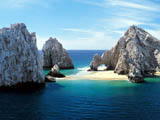
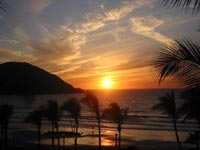
Mazatlán, Sinaloa
Mazatlan is socially diverse, and attracts people from many different countries and races. There is a strong contingency of chinese and italian people living here; although the city also attracts Americans, Canadians and some Europeans looking for an authentic Mexican town without the hyper commercialism of some other resort areas in Mexico.
Mazatlan is one of Mexico's most affordable vacation destinations and many Mexicans arrive here every year for their family holidays. The Zona Dorada (Golden Zone) is a stretch of sea-front properties - mostly hotels and condominiums - extending along some four miles of beach. It's here where the tourists come to stay and spend their vacations, and some expats purchase condos with stunning views across the Pacific Ocean and Sea of Cortes.
Among the Most Beautiful Beaches in Mexico
Living or retiring in Mazatlan is affordable (possibly the most affordable beach resort city on Mexico's Pacific coast). Property prices have risen in recent years, but this is a city still in the early stages of a renaissance; in and around the historical center there still exists a mixture of developed and undeveloped colonial properties; and around the edges of the historical center are neighborhoods with 'fixer upper' properties being offered for sale, a sure sign that there is much more growth and development to come. The other affordability factor in Mazatlan are living costs: local shops, stores and prices are lower than other beach resorts in Mexico and smaller budgets stretch further: not just at the point of purchasing a property - but also when residents move in and start paying day-to-day living expenses.
Overlooked Gem, About to Awaken
A couple of week's visit to Mazatlan demonstrates that this is a city that has been overlooked by most foreigners for retirement and investment, and also one which is on the cusp of awakening to become an important resort city in Mexico as well as internationally.
Historic Center
The Centro Historico (Historic Center) has been undergoing a remarkable renaissance in recent years as property investors have bought up derelict colonial buildings and restored them to their former 18th Century glory. The city authorities are doing their part, too, by improving essential infrastructures such as water, drainage and the local electricity supply grid.
In addition to some fine residences, the historic center is also developing into a lively commercial and cultural center, offering art centers, theater, boutique stores, and fine restaurants situated alongside beautiful tree and flower-laden plazas and patios.
Mérida, Yucatán
Merida is the capital city of the state of Yucatan, famous for its rich Mayan history and culture as well as some of Mexico's most important archaeological sites. Merida is a regional hub of activity and extremely well connected by land and air to other parts of the Yucatan region, to Mexico City and by air to the U.S.A.
This city portrays a considerable charm and buzz about it brought about by its contrasts: Merida is cosmopolitan and quaint; Mexican but with a strong Mayan influence everywhere you go.
Colonial Lifestyle
For those wishing to retire in the Yucatan region of Mexico, the capital city of Merida offers colonial-era charm, urban vibrancy, and ease of access to the best the region has to offer including art, cultural events, secluded beaches, nature reserves and archeological treasures.
Merida is distinct culturally and politically from the rest of Mexico. This is brought about, in part, through centuries of desire for political autonomy, driven by a Mayan inheritance which continues to influence the city, its inhabitants and environs.
A Great & Peaceful City
The pulse of daily life may be experienced everywhere on Merida's streets, and particularly in the plazas and courtyards where locals congregate, engage with each socially, trade or watch the world go by. On weekends, cars are prohibited from entering the city center and the street is transformed into haven for strollers, market goers, street artists and tourists.
Tierra Caliente
Merida's geographical location places it firmly inside the category of "tierra caliente" (hot lands, areas less than 750 feet below sea level) and living here means that summer heat and humidity are as much as part of the landscape as the rich colonial architecture.
During the rainy season, that runs from May to October each year, Merida combines its hot climate with thunderstorms and humidity ensues. The humidity wanes in the dry season, bringing a welcome change of climate to residents and visitors alike.
A City Back in Bloom
During the course of the last decade, Merida has come to popular attention as a place for living and retirement by North Americans and Europeans searching for affordable, yet authentic Mexican living in a culturally sophisticated environment.
Merida today is a progressive city, indeed, a 'poster-boy' example of how a 'colonial backwater' can come to reinvent itself. After decades of economic decline, following the Mexican revolution of 1910-1917, and subsequent collapse of the sisal plantations and haciendas which took an enormous economic and social toll on this region, Merida is once again becoming transformed by its people and and adapting itself to the new economies of the twenty-first century.

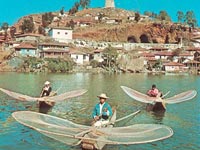
Pátzcuaro, Michoacán
Patzcuaro ("Pahtz-Kuah-Ro") is a charming town with a mixed colonial and indigenous feel, located just 45 minutes from Morelia, the State Capital of Michoacan. Michoacan's people are some of the friendliest and most welcoming in Mexico.
This ancient highland town has an authentic character and charm, clean and crisp mountain air, surrounded by forests and lakes and set against the backdrop of azure-blue skies.
The central area of Patzcuaro and its immediate surroundings are the most attractive areas to be in, featuring colonial buildings, mansions and courtyards built around the fine and elegant main square, the Plaza de Quiroga, also called the Plaza Grande as well as a smaller, but no less attractive Plaza de Gertrudis Bocanegra, also known as the Plaza Chica.
Affordable Living in Patzcuaro
Basic living costs are much lower in Mexico's provinces than in the U.S.A., Canada and Western Europe; within Mexico, Patzcuaro offers one of the lowest living costs of Mexico's colonial towns and cities, and lower still than most coastal towns and resorts.
Patzcuaro is a quiet, low-key town set in the western highlands of Mexico, some four-and-a-half hours by road from two of Mexico's biggest cities: Guadalajara and Mexico City. The closest 'big' town in Morelia, the capital of Michoacan, and the place where most of the expatriates living in Patzcuaro go to procure foods, goods and items that are not available in Patzcuaro.
Highland Town & Quiet Environment
Patzcuaro is a quiet, low-key town set in the western highlands of Mexico, some four-and-a-half hours by road from two of Mexico's biggest cities: Guadalajara and Mexico City. The closest 'big' town in Morelia, the capital of Michoacan, and the place where most of the expatriates living in Patzcuaro go to procure foods, goods and items that are not available in Patzcuaro.
Artists, writers, sculptors and those seeking peace and tranquility as well as magnificent natural environments find Patzcuaro suits their needs perfectly: they are away from the 'madding crowd'; yet close enough to make use of modern amenities and get efficient connections to the nation's capital as well an international airport with direct flights to the United States.
Already, there exists a small contingent of foreign expatriates living in Patzcuaro; full or part-time. This community is growing and will likely continue to grow as more visit this picturesque and charming town and, like others before them, choose to settle here.
Patzcuaro offers foreign residents an opportunity to live and integrate within an authentic Mexican town: one that a decade ago was barely known, and today is being discovered and settled by increasing numbers of foreign expatriates who want to live in a mountain environment, close to modern amenities, and far enough away from the commercial landscapes that tend to engulf them.
Playa del Carmen, Quintana Roo
Playa del Carmen is part of the Riviera Maya (the stretch of beach-facing land between Cancun and Tulum). This resort town is, and always has been, more 'down to earth' and authentically Mexican compared to trendy, commercial and high-rise Cancun situated thirty miles north of here.
A fun and lively beach culture has sprouted up around Playa del Carmen that demonstrates the diverse blend of interests which become attracted to these shores. The expat community is equally diverse, with a particularly strong European following; and if you live here, you'll become comfortable intermingling with multiple nationalities and the crucible of cultures and languages thrives within the sphere of a Mexican resort town that has moved far away from its fishing village roots.
Excellent Transport Links
Playa del Carmen is the main port for ferries connecting the Yucatan peninsula to Cozumel, the largest island off Playa's coast and one of the world's best scuba diving hot spots. Playa is also well connected by means of a modern highway to Cancun's international airport (less than an hour away); and a small international airport on the Island of Cozumel. Plans are also afoot to build an international airport in Tulum, just a few minutes away from Playa del Carmen, to serve the Riviera Maya 'corredor' and take pressure off Cancun's airport system, which is the second busiest airport in the country, after Mexico City.
Cozy Beach Side Living in Playa del Carmen
Although Playa has undergone a faster pace of development than any other place in Mexico over the past decade, the local authorities have taken care to retain the characteristics and atmosphere which attracted people here in the first place. For example, by city ordinance, new buildings cannot rise more than three stories in height. From the time Playa was a small quaint town with few developments and a tony populace, the local authorities were certain that they did not want to create "another Cancun" here and, even today, continue to make great efforts to ensure that the high-rise commercialization of Cancun stays thirty miles north of here.
Actively Relaxing Experience
This location is synonymous with relaxation and diversion and, as one of Mexico's premiere resort towns, both may be enjoyed in equal measures at Playa del Carmen.
A Warm & Genuine Mexican Town
Playa del Carmen is today one of the most popular resort towns in Mexico, but it remains an authentic Mexican town: a place where you can still find tienditas (small local stores) run independently by local families, ambulant vendors, local plumbers and carpenters advertising their services on the street, and the abundance of day-to-day life situations which are omnipresent across most of Mexico's towns and cities and which help to put emphasis on the definition of 'the real Mexico'.


Puebla, Puebla
In a broad, high valley about 60 miles southeast of Mexico City is a city known by many names over the years: City of Angels, City of Tiles, Heroic City of Zaragoza. Today we know it simply as Puebla.
Established by the Spanish in 1531 on the main route between the port of Veracruz (the most important port in Mexico) and Mexico City, Puebla was the principal city of Colonial Mexico. Puebla's appearance is the most European of all the Colonial cities, because it was planned from the ground up by a Spanish city designer rather than being built within an existing Indian community.
A Great & Cultural City
Although modern Puebla is highly industrialized, its historic downtown remains a Spanish-Colonial treasure filled with elegant 17th and 18th century European architecture and art. When you add a temperate climate year-around, friendly and courteous residents (called poblanos) and delicious regional cuisine, Puebla becomes the ideal place to live.
One of The Best Cuisines in The World
Puebla's cuisine, "Cocina Poblana" is famous all around Mexico. Puebla is considered the home of mole, a rich, spicy sauce containing chocolate, cinnamon and nuts, as well as different types of hot peppers. Served with chicken, mole has become the most renowned dish of Puebla's cuisine. "Camote", a tubercule akin to potato and cooked in a stove is also a delicacy. "Rompope" or alcohol based eggnog is also a staple, created many years ago by Puebla's Nuns. Chiles en Nogada, a superb dish filled with meat, fruits and almonds is prepared only in special occasions.
Weather in Puebla
Puebla features a Subtropical highland climate. The climate is moderated by its high altitude of 2,200 m (7,217.85 ft). As a result it rarely gets truly hot in Puebla, with an average of only three days seeing temperatures rise above 29 °C (84 °F). Night temperatures are cool at all times of the year, often requiring additional clothing. Puebla experiences a dry season from November through April and a rainy season from May–October. The valley has a temperate climate while the higher elevations have cold climates. Most rain falls in the summer and early fall
Education
Puebla City is one of Mexico's cities with the most universities, only second to Mexico City. Some local universities are the Benemerita Universidad Autónoma de Puebla, the Universidad Popular Autónoma del Estado de Puebla, the Universidad de las Américas Puebla and the Instituto tecnológico del Estado. The Autonomous University of Puebla (in Spanish: Benemérita Universidad Autónoma de Puebla, BUAP) is the oldest and largest university in Puebla, Mexico.
Puerto Vallarta, Jalisco
Puerto Vallarta is a resort town on Mexico's Pacific coast that has been popular with leisure travelers and expatriate residents for decades. The location has also earned some notoriety due to its backdrop being employed for the filming of some major motion pictures; the most famous, perhaps because it 'put Puerto Vallarta on the map', is Night of the Iguana.
Affordable & Modern
Puerto Vallarta, like so many other Mexican towns and cities -- even those on the coast -- is affordable to buy into and affordable to live in. The stellar population growth in the region has also been attracting some major commercial investors to the region; and so modern, avant-garde amenities, like super-centers selling imported U.S. goods, modern shopping centers, cinemas, good restaurants and modern healthcare centers and clinics are just some of the modern amenities being enjoyed by residents in the Vallarta area. For people who want a real taste of Mexico and also want some U.S.-style commercial comforts to support their lifestyle, Puerto Vallarta is an option.
Puerto Vallarta & Nuevo Vallarta
The 'old town' of Puerto Vallarta still exudes "old world" feel and characteristics with its narrow streets, cobbled stone lanes, red-tiled pitched roofs and authentic local neighborhoods. Further out of town, north and south, larger houses as well as luxury condominiums have began to dot the landscape.
Nuevo Vallarta (New Vallarta), an area some ten minutes drive north of the city's international airport is one the places that has attracted enormous interest from foreign buyers with its gorgeous marina, relative proximity to the city center of Vallarta, proximity to modern shopping and services, and still right on the sea front.
Vibrant Economy
It's estimated that over fifty per cent of people in Vallarta are employed -- directly or indirectly -- by the tourism industry. Notwithstanding this, the city of Vallarta and Jalisco, the state it resides in, has other sources of prosperity which are flourishing more and more each year.
Health in Cuernavaca
The region's sea-side climate, with winter temperatures (Dec-Mar) averaging in the mid 60's F, spring temperatures (Apr-Jun) rising to averages in the late 70's F, and summer temperatures (July-Sep) reaching as high as the mid 90's F, Puerto Vallarta offers an attractive year-long climate for living and retirement. The months of July, August and September bring the hottest temperatures and highest levels of humidity; those who love this climate stay all summer; those who don't leave for the hottest months (July, August) and return in late September when the temperatures and humidity ease.
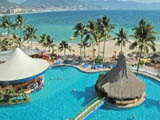

San Miguel de Allende, Guanajuato
From its historical roots, San Miguel has been transformed from a quiet, quaint, cobble-lined town that really started to develop under the auspices of artists who adopted the town in the 1950s—to today's explosion of popularity with so many foreign expatriates choosing to live (full-time or part-time) in Mexico that the town is one of the most densely populated expatriate areas in the entire country.
A Colonial & Bohemian City
Most of the art and cultural activities which take place here are concerned with arts and learning, painting, weaving, photography and sculpture. San Miguel is also one of the most popular places for foreigners to come and learn Spanish, and so Spanish language schools have become an important part of the local economy.
Colonial Center
San Miguel de Allende continues to be one of the country's most important tourist centers. In part due to its location (it's situated centrally the heartland of the colonial 'silver' cities) and also because the town's charm is well supported by its excellent amenities (fine hotels, restaurants and shops) which cater well to modern visitor's needs and desires.
Just A Beautiful City
This is one of Mexico's most beautiful places; it has a near-ideal climate, it's relatively close to Mexico City and has excellent road transport links. The town is served by airports in Mexico City and in Leon; both are about equidistant from the town. Mexico's colonial cities are extremely safe places to visit and live in, and the current news-flow which has, in part, caused the downturn, will itself pass, and people will, again, be turning their eyes with anticipation to San Miguel de Allende.
An Inspiring City
San Miguel de Allende is one of the most-written about places in Mexico. However, no amount of words can convey the almost mystic allure this place holds with the thousands of foreigners who live here, and the hundreds of thousands of foreigners and Mexicans who enjoy returning to visit this town each year. Like so many places in Mexico, you have to go and experience it to better understand (moreover to experience) just how San Miguel casts its spell.
Veracruz, Veracruz
Veracruz on Mexico's tropical southern Gulf coast, is the nation's leading commercial port. The historic center is frequently likened to pre-revolutionary Havana, and though its colonial buildings lack the majesty of those of the Cuban capital, it is hot, bustling and funky for sure.
An Overwhelming City
Unlike most other popular retirement spots in Mexico, Veracruz is very much a working city. Tenaris, the world's leading producer of pipes for the oil industry, has a major plant just outside the city. Tourism, though important, is a sideline. And that is just part of the charm for those seeking the "real" Mexico. Even when tourists flood into Veracruz, as they do each year during school holidays – especially at Easter – and for the annual carnival, they are overwhelmingly Mexicans.
Easily Accesible
Veracruz is connected to Mexico City by a modern, four-lane, highway. The journey time takes about three hours by car; around four hours on a first-class bus. The city's bus station is a major regional hub, offering connecting services to all other major towns and cities in the state of Veracruz as well as services which run north and south along Mexico's Gulf Coast. The city's international airport, located some six miles southwest of the center and offers frequent connections to Mexico City as well to a few U.S. cities, most notably, Houston, TX.
Attractions Along the Gulf Shore
Modern sewage treatment plants have cleared up pollution on the city's beaches, but they still aren't great. Keen swimmers might prefer the municipal Leyes de Reforma complex with three excellent pools, one of Olympic dimensions, where senior residents can swim at any time until swim-club training begins late afternoon, for a small stipend each month.
Downtown dive shops offer trips to offshore reefs for scuba and snorkel enthusiasts, though aficionados say the diving is better at Anton Lizardo, about half an hour from downtown.
Authentic City
Veracruz is a perfect 'short list' location for people who want to live and retire in Mexico away from the popular tourist cities and resorts which have become, in some instances, almost overwhelmed by foreign expatriates.
Notwithstanding the climate, the city offers foreign residents an opportunity to enjoy one of Mexico's most charismatic and most vibrant cities; authentic with modern comforts; extremely affordable; friendly and easily accessible by road and air.
